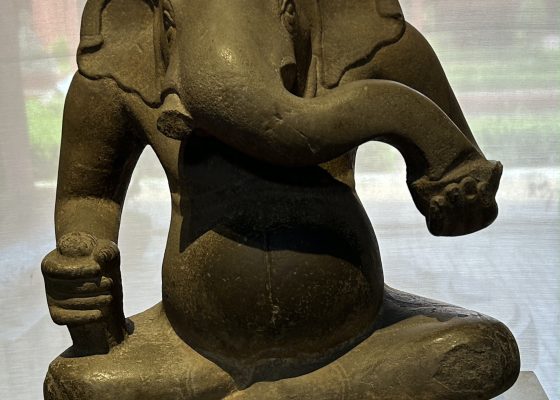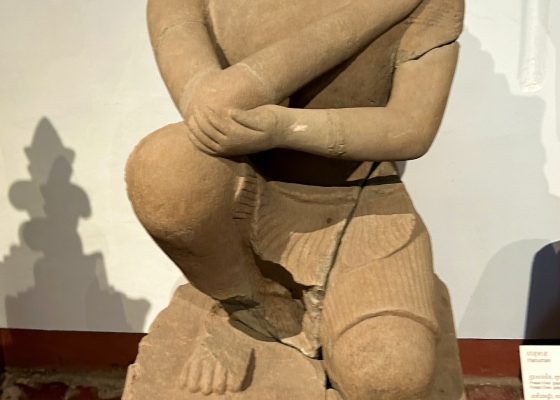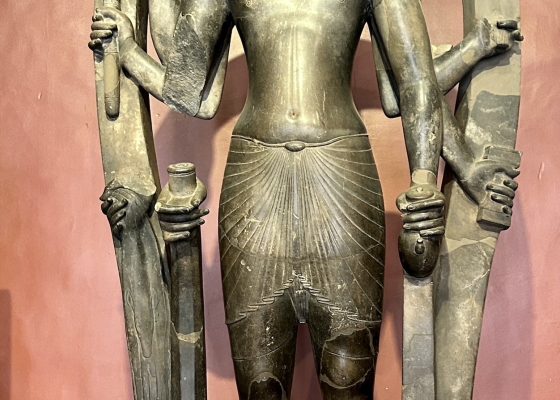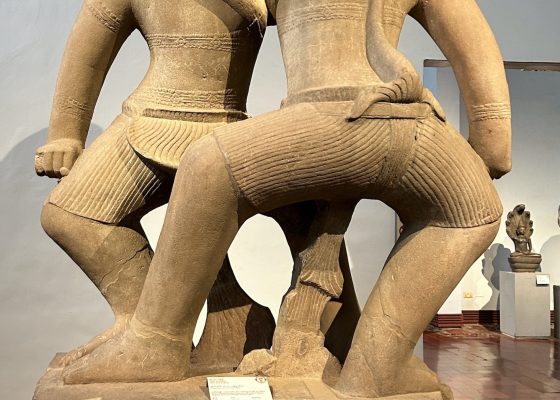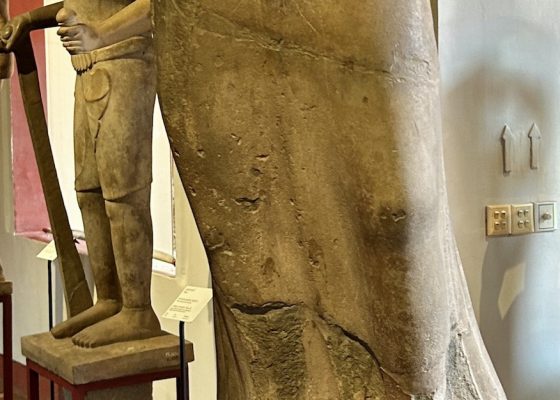Phnom Penh – More Than the Killing Fields
In my last post from Southeast Asia our group concluded our visit to Vietnam by visiting the Mekong Delta where we spent a day exploring this watery wonderland. However, this epic journey through three countries with Adventures Abroad has not come to an end as we will now head to Cambodia for the final five days of the tour. The main attraction in Cambodia is of course the temple complexes around the city of Siem Reap, most notably Angkor Wat and that’s where the trip will end. However, the city of Phnom Penh, once known as ‘The Pearl of Asia’, is the starting point for most visits to Cambodia. Unfortunately it is more well known today for its role in the infamous Killing Fields than for its beautiful location on the Mekong River, the charms of its temples and the treasures of its museums. Yes, we will visit the Killing Fields, but in this post I’ll concentrate on the brighter side of Phnom Penh, because that’s really more a reflection of the city today than what happened here fifty years ago.
Everyone in our group who was on the Vietnam portion of this tour has opted to go to Cambodia as well. This makes a lot of sense as coming all the way from North America just to spend less than a week in Cambodia isn’t really practical. Another option is to squeeze Cambodia in between Vietnam and Thailand which AA also offers. Either way this a country that it is a must visit for most avid travellers – the Khmer Empire was once one of the most powerful in Asia and the traces it has left are among the archaeological wonders of the world.
The flight from Saigon to Phnom Penh takes only an hour and we meet up with our local guide and driver after clearing customs. Once again I am unprepared for the modernity of the city and the many high rise buildings that dominate the skyline as we head towards our hotel.
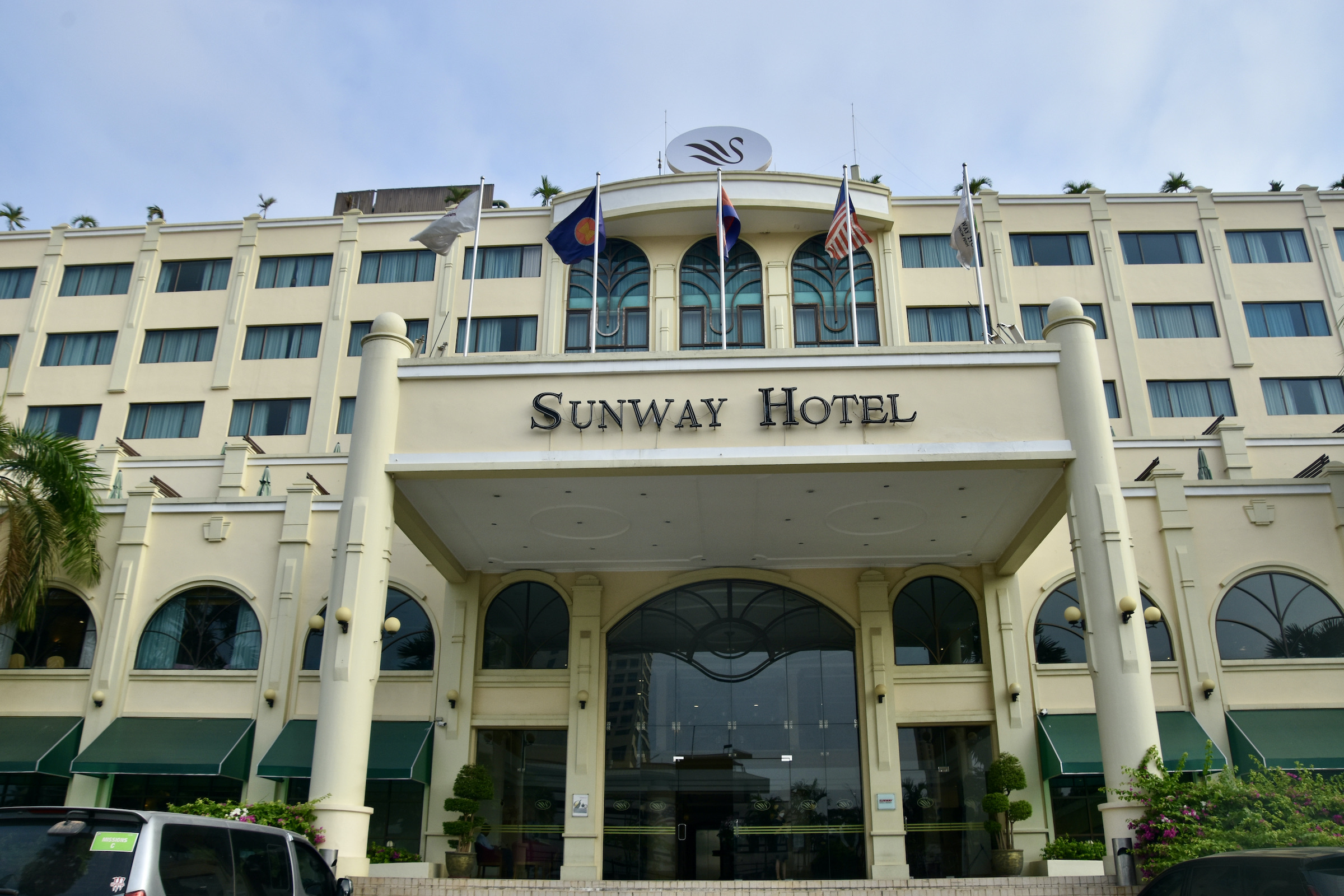
The Sunway Hotel is very centrally located within walking distance of much of the historical part of the city including the riverfront and Wat Phnom, the spiritual heart of Phnom Penh. Before we start exploring, here’s a brief history of Phnom Penh and how it came to be the capital and predominant city of Cambodia.
History of Phnom Penh
By Asian standards Phnom Penh is a fairly new city, only 700 or so years old with a long period of abandonment in between its foundation and reemergence as the capital of Cambodia. Like many great cities it has a definitive foundation legend that might actually have some truth in it. That legend tells of a woman named Penh who pulled a floating tree out of the river and discovered four Buddha statues and one of the Hindu god Vishnu inside the tree. This was taken as sign of good fortune and Penh, presumably with the help of many others, built up a small hill on top of which she built a temple, Wat Phnom to house these relics. The word Phnom is Khmer for hill and thus the city’s name Phnom Penh or Penh’s hill.
The temple is still there in the heart of the city and only a short walk from our hotel. These stairs lead up to the entrance
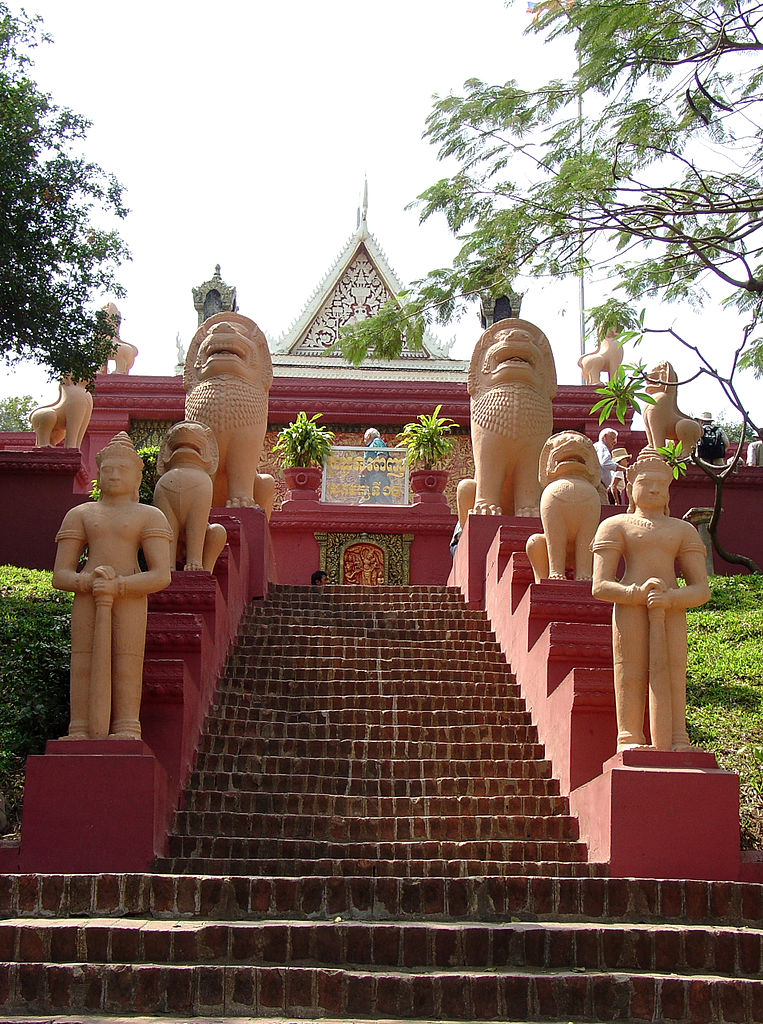
Inside you will find this statue of Lady Penh along with so many Buddha statues that it’s impossible to know which might have been the original four and which were added later.
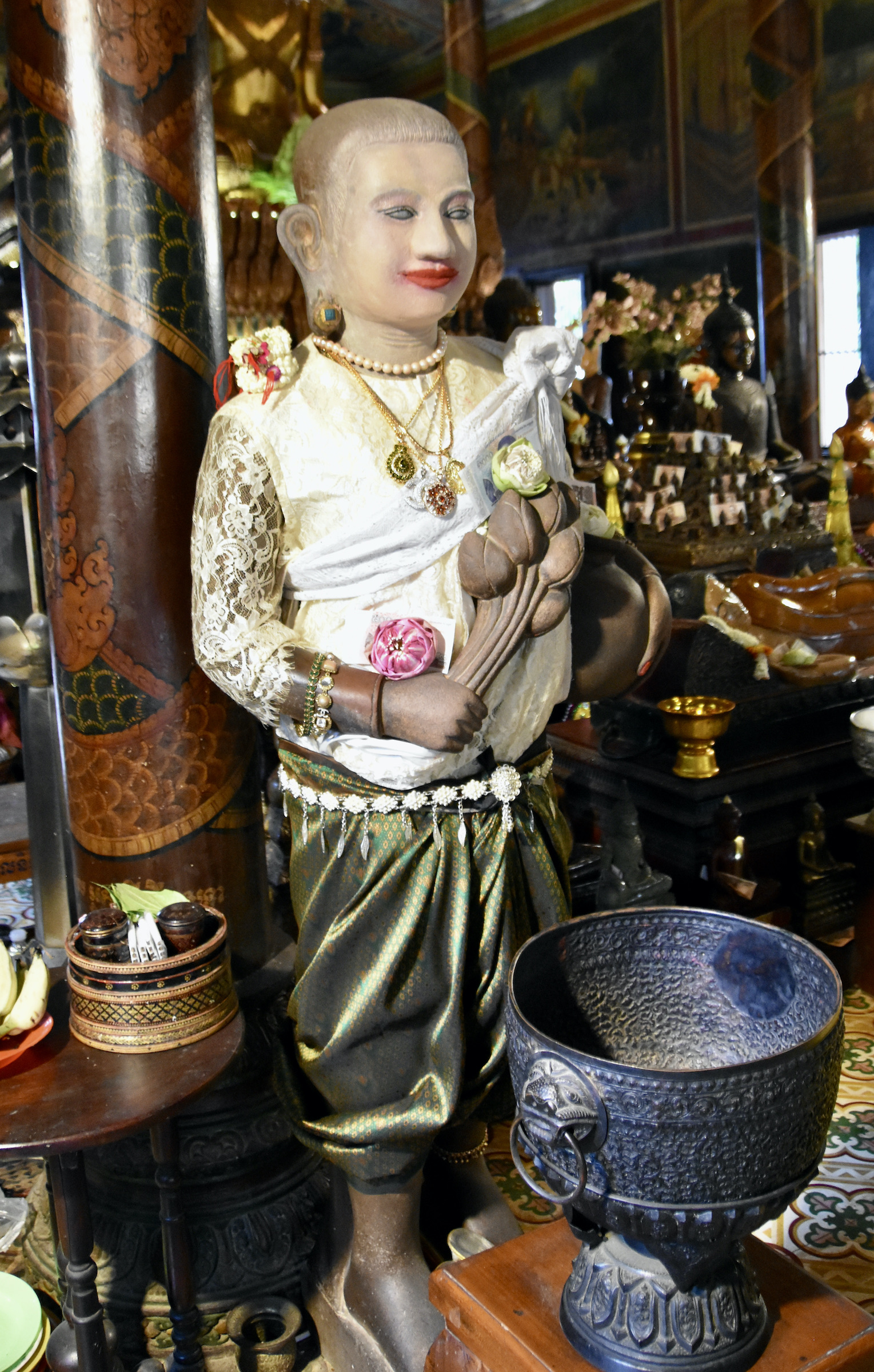
The discovery of the statues did bring some initial good luck to Phnom Penh as the capital of the Khmer Empire was moved here in 1432 after the former capital of Angkor Thom was captured by the Siamese. Unfortunately that only lasted for just over seventy years after which internal civil wars between warring royal pretenders led to the abandonment of the city for some 360 years. Only in 1866 was Phnom Penh once again recognized as the capital when King Norodom I built his Royal Palace there.
In 1870 the French arrived and began a building spree that lasted for more than 60 years and gave the city a distinct French colonial architecture that led to its moniker “The Pearl of Asia”. Independence from France did not come until 1953 after which Cambodia, like its neighbours Vietnam and Laos endured a long period of civil wars which in the case of Phnom Penh resulted in the worst possible outcome. From 1975 to 1979 the Communist party of Cambodia, the Khmer Rouge forcibly removed virtually the entire population of the city, murdering almost all the permanent residents. This regime was removed by the Vietnamese who invaded the country in 1979 setting off a civil war that lasted until 1989.
Despite the atrocities of the 1970’s and 80’s, Phnom Penh has had a remarkable comeback and today is a city of over 2 million inhabitants quickly becoming a modern competitor to Saigon and Bangkok as a centre of education, innovation and manufacturing.
Aside from the infamous Security Prison 21 which we will visit in the next post, Phnom Penh has two major attractions – the Royal Palace and the excellent National Museum. Let’s start with the Royal Palace.
The Royal Palace Complex
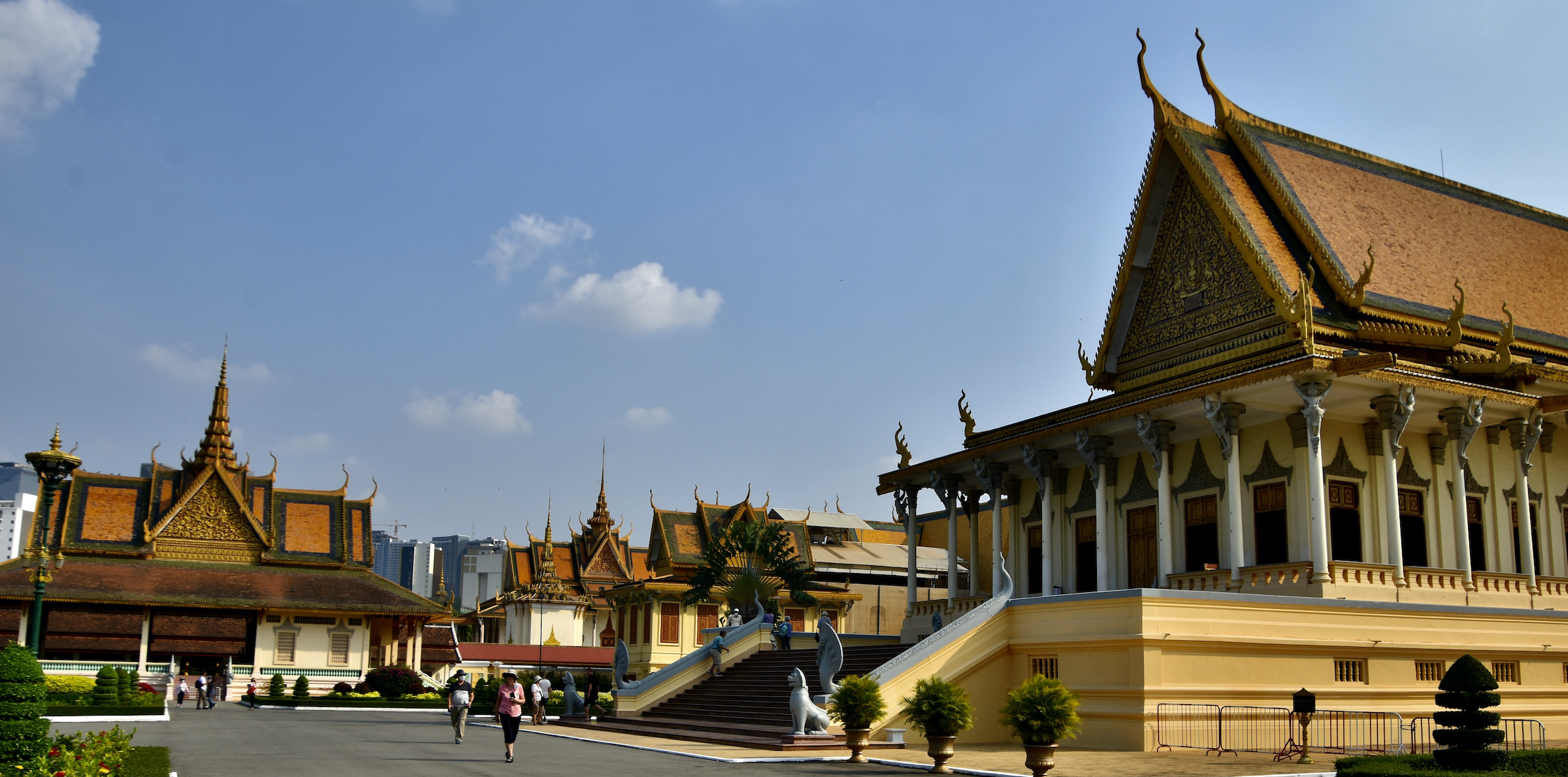
One thing I am learning on my visit to Southeast Asia is that the type of architecture pictured above is very difficult to determine age wise. One is not going to mistake a gothic cathedral for a new construction or a modern skyscraper for an an ancient one, but these buildings could be a thousand years old or built yesterday. The consistency of design over such a great period of time is not something we are used to in the west.
The Royal Palace complex of Phnom Penh dates only from the late 19th century and some of it is as new as the 1960’s, yet it is as visually appealing as if it was as old as the complexes Alison and I saw in Bangkok and later in Luang Prabang in Laos.
Somewhat surprisingly, the many civil wars, Communist governments and current quasi-dictatorship have not resulted in the abolition of the Khmer monarchy which had been reestablished in Phnom Penh in 1866. The first buildings of the Royal Palace complex were constructed by King Norodom I. Today King Norodom Sihamoni, great grandson of Norodom I, lives in a portion of the Royal Palace that is off limits to tourists, but otherwise most of the grounds are open to the public.
The most notable buildings include the Throne Hall where the King presides when meeting visiting dignitaries and where royal weddings and funerals take place.

The Silver Pagoda is the storehouse of a number of Cambodian national treasures including an emerald crystal Buddha and another festooned with over 9,500 diamonds. Its name comes from the over 5,000 silver tiles that once adorned its interior, but have since been stripped. How the other treasures survived seems miraculous.
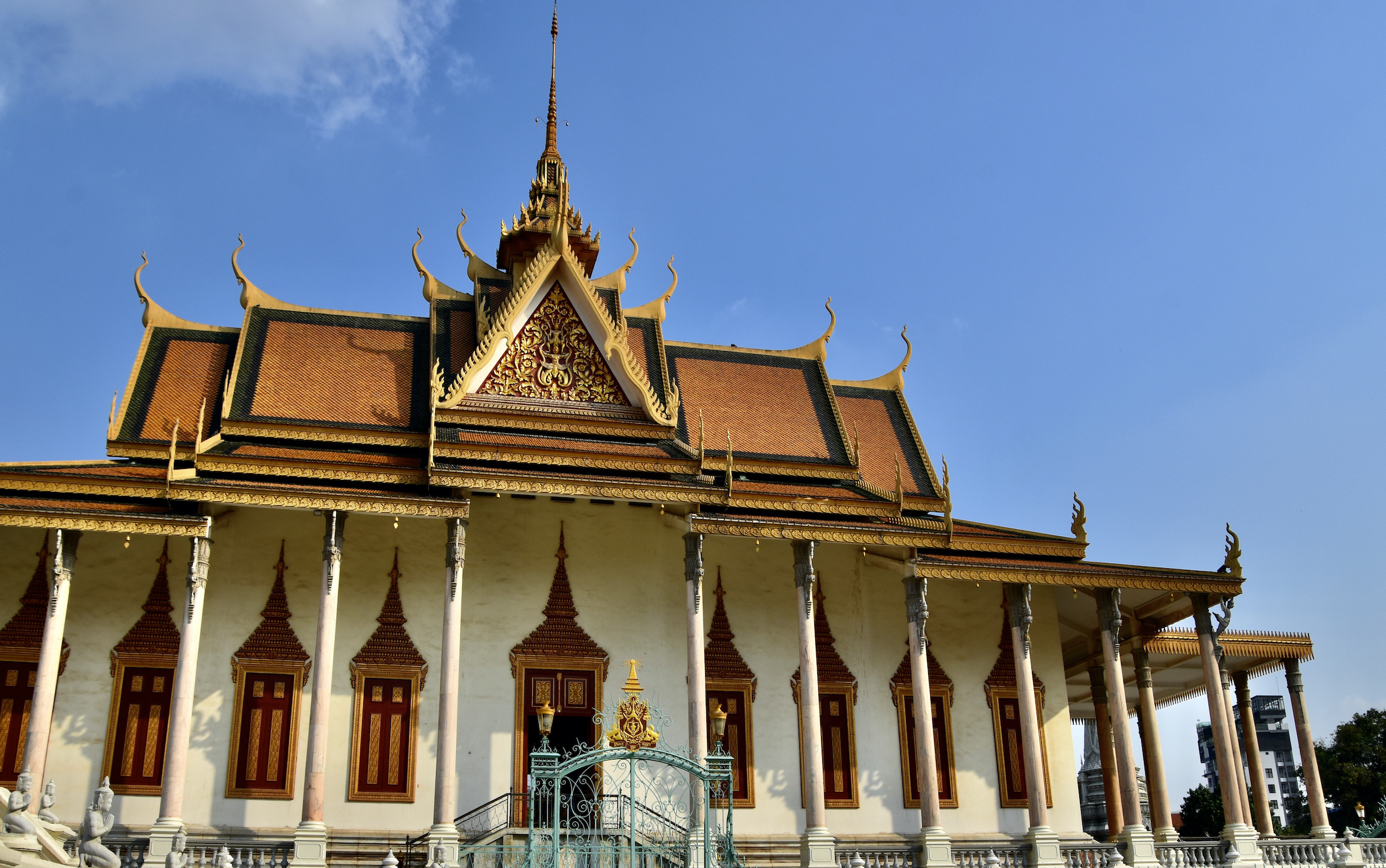
The Silver Pagoda is also where you will find an epic mural depicting Cambodia’s version of the Ramayana known as the Reamker which dates as far back as the 7th century. In this scene we see the battle between the monkeys and the demons which is one of the culminating events in the poem. This mural dates from 1903-04 and was the work of over forty separate artists. It stretches an astonishing 642 metres (2100 feet) around the temple complex and would literally take days to fully take in.

Also to be found on the Royal Palace grounds are a number of stupas containing the interred remains of Cambodian kings. This one contains King Norodom Suramarit, grandfather of the current king.
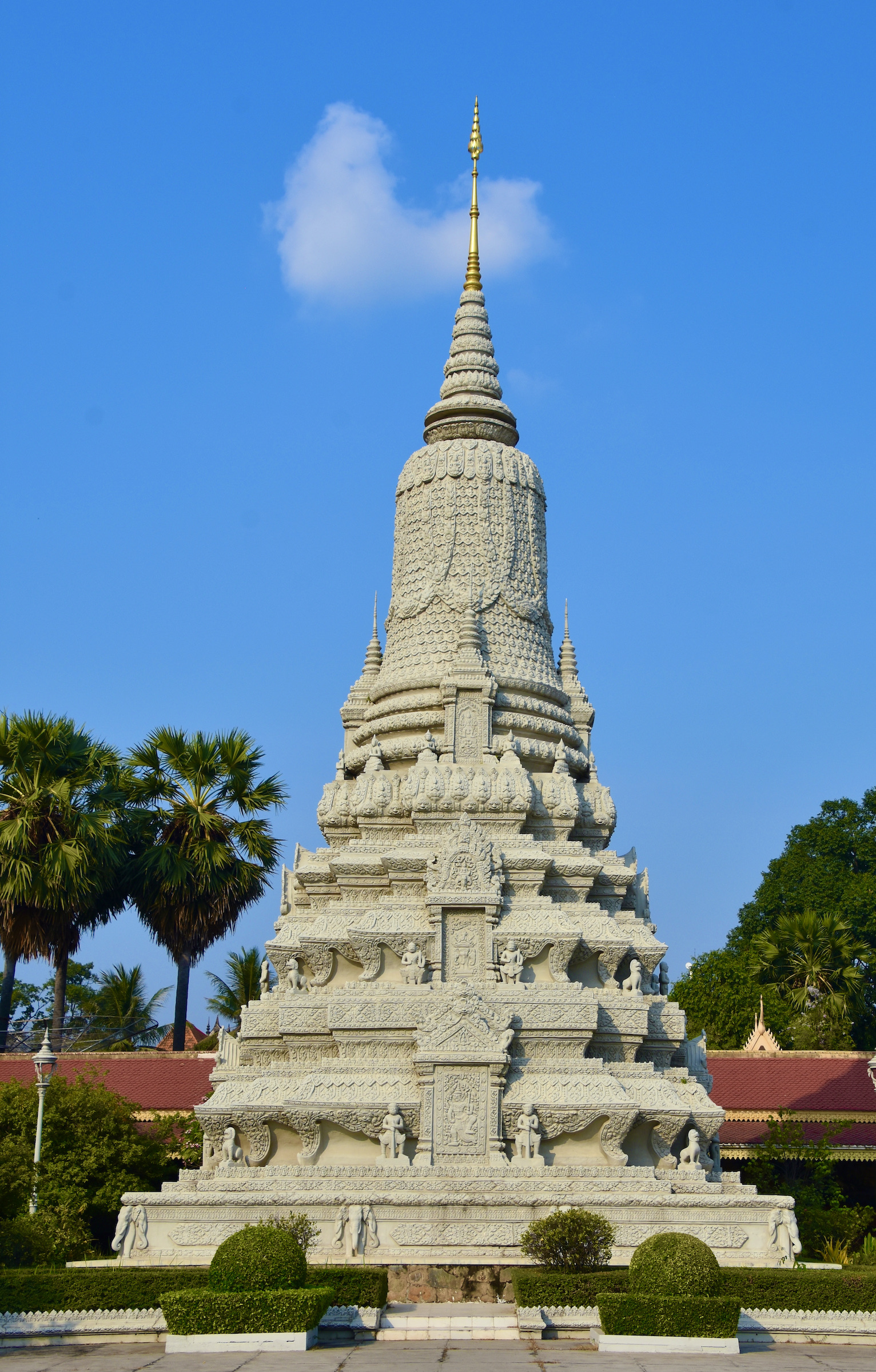
Also to be found on the grounds of the Royal Palace is this model of Angkor Wat, the second one we have seen on this trip, the first being on the grounds of the Grand Palace in Bangkok. This only heightens our desire to see the place in person which is where this trip will end.

In the west a white elephant is usually something to be ignored or disparaged while in the east it is a prized and revered being to both Hindus and Buddhists. Wars were actually fought in Southeast Asia over possession of white elephants. Here in the Royal Palace complex there is a white elephant in the room, combining two western clichés into one.

The National Museum of Cambodia
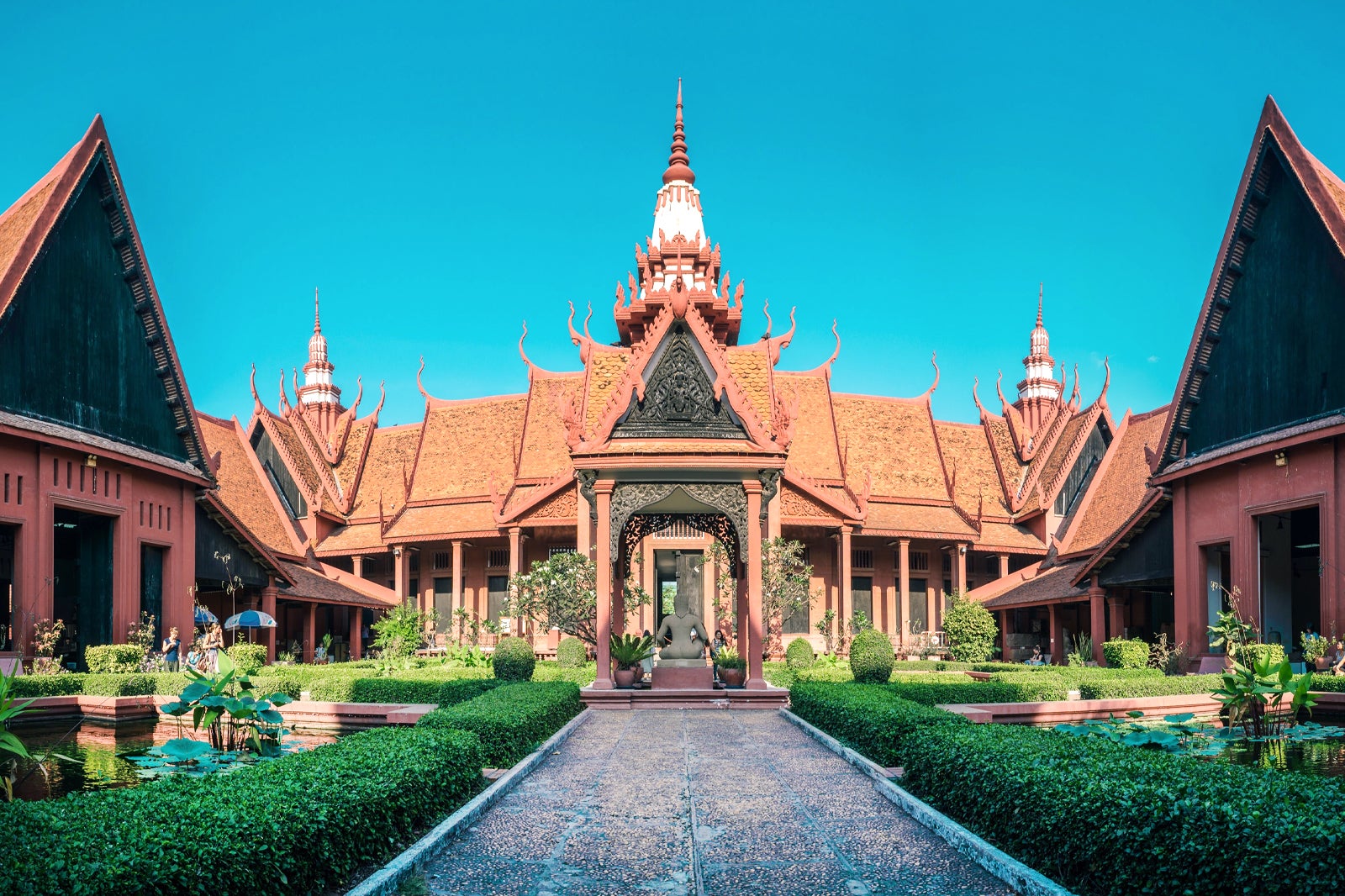
Although Phnom Penh is noteworthy for its French colonial buildings, perhaps the most important one built by the French is the National Museum which was designed by George Groslier based upon classic Khmer architectural features. It opened in 1920 and displays the most comprehensive collection of Khmer and other Cambodian artifacts in the world. We visited a number of museums on this trip, all of which were excellent, but this one really bowled me over with its amazing exhibits. To make the visit even better we were greeted by the curator who waived the usual no photography rule, which is why I have photos of some of the most memorable artifacts.

Up until this visit to Southeast Asia I had always associated bronze statues with ancient Greece. Little did I know that in Cambodia bronze casting has been practiced since at least 1,000 BCE and maybe much earlier. The photo above is a striking remnant of a reclining Vishnu from the 11th century, some 2,000 years after the art of bronze casting began.
The museum has a large collection of pre-Angkor Wat artifacts such as this sandstone Buddha in the abhaya mudra seated position indicating the attainment of enlightenment which dates from the 6th century.
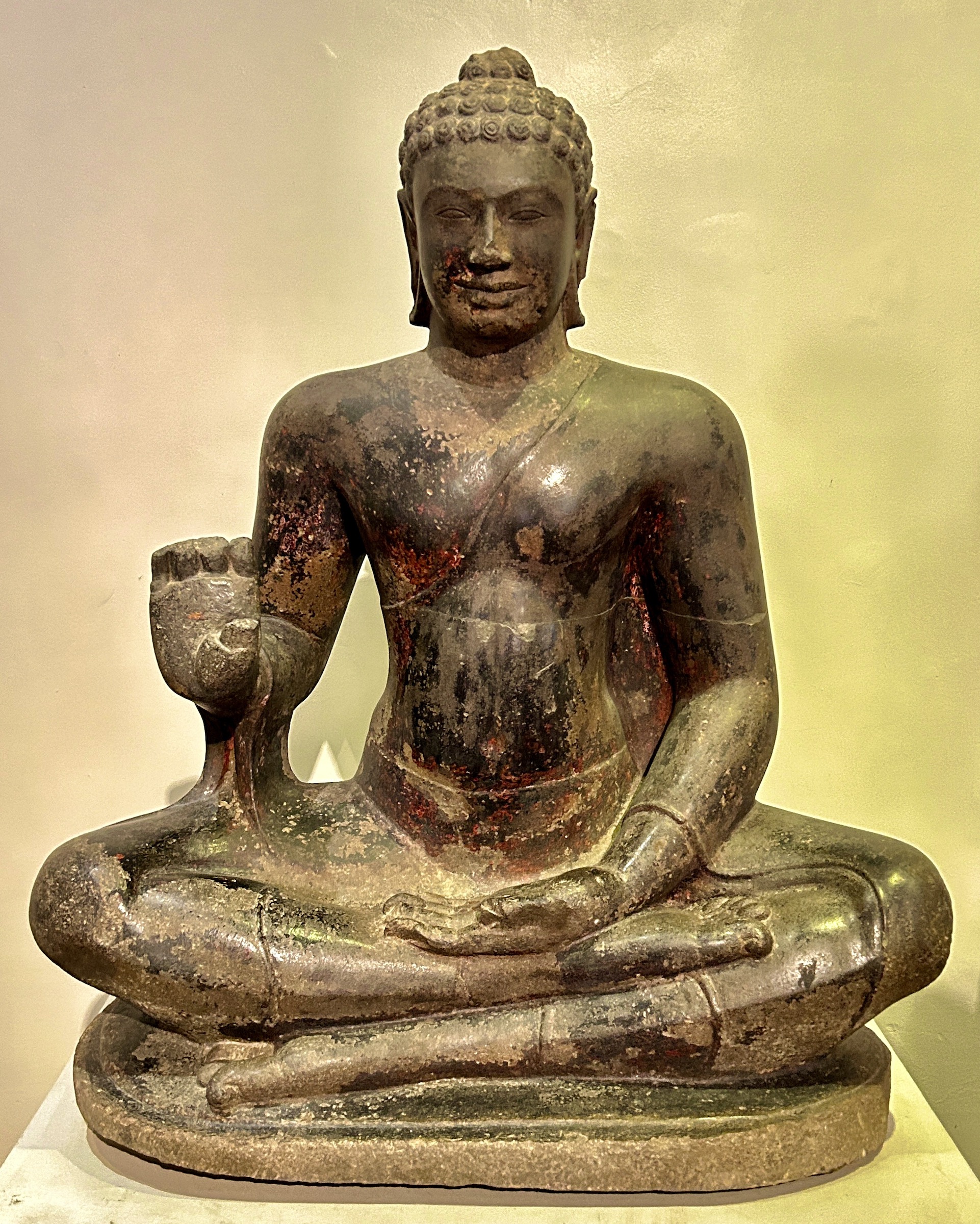
This museum is a good place to begin to familiarize yourself with the principal gods and other figures associated with Hinduism. This gallery displays only a few of the hundreds of such statues on exhibit. Double click to open one and double click to enlarge.
- Ganesha – 7th Century
- Hanuman – 10th Century
- Head of Devata – late 12th Century
- Shiva & Skanda – 10th Century
- Skanda on a Peacock – 10th Century
- Vishnu – 6th Century
- Valin & Sugriva
- Torso of Durga – 7th Century
- Yaksha – Late 12th Century
We came across this group of visiting students who were seated before these many figures of Buddha and didn’t mind getting their photo taken. While I am not religious, I can imagine that if you are a practising Buddhist this place must have some great spiritual power.

While Thailand and Vietnam are justly famed for their many great regional cuisines, Cambodia also has its own distinct dishes of which we got a flavour at the Banana Tree Restaurant that evening starting with Khmer herbal soup.
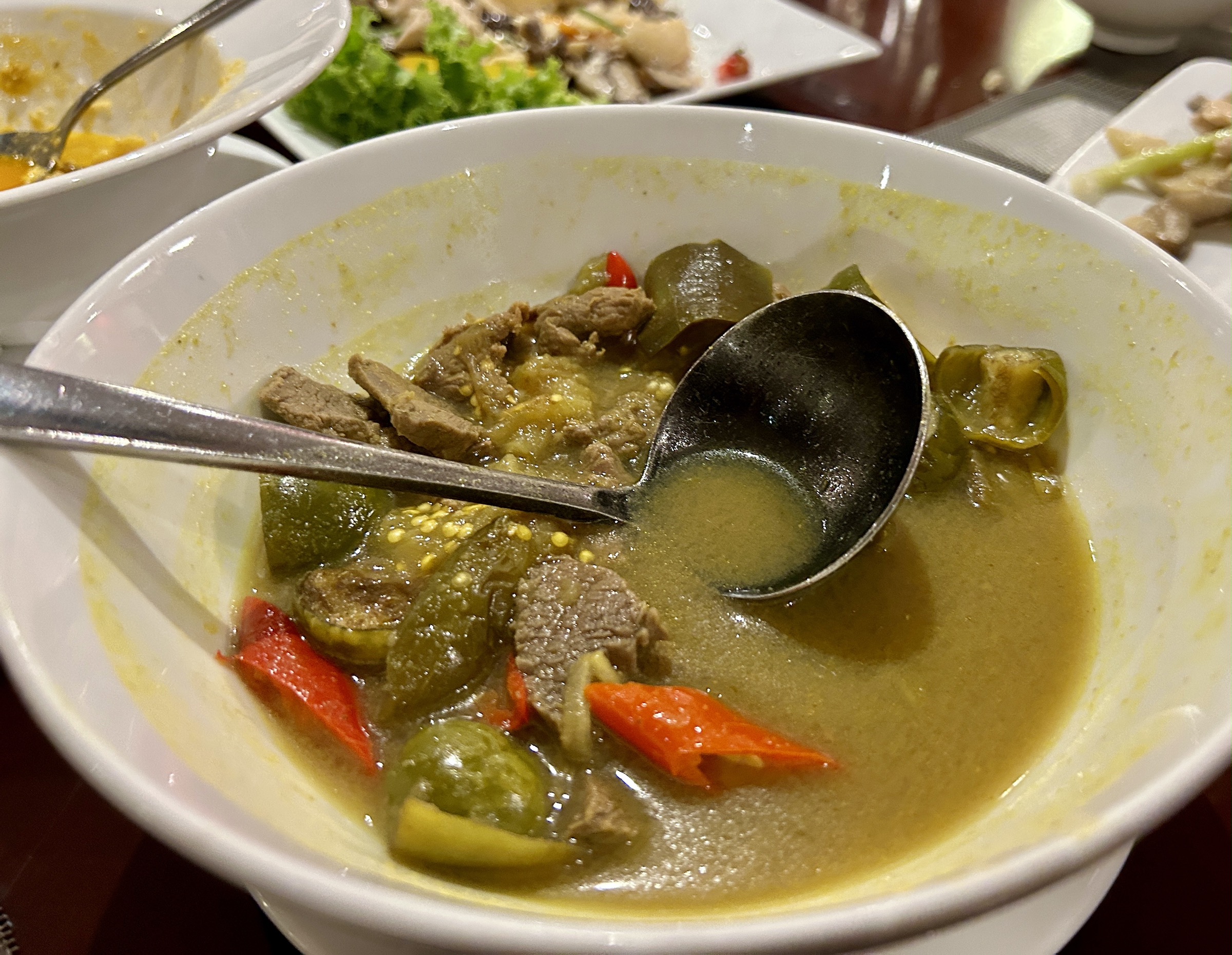
The main entree was the national dish of Cambodia, fish amok which is essentially a mild curry dish which tastes a lot better than it looks in this photo.
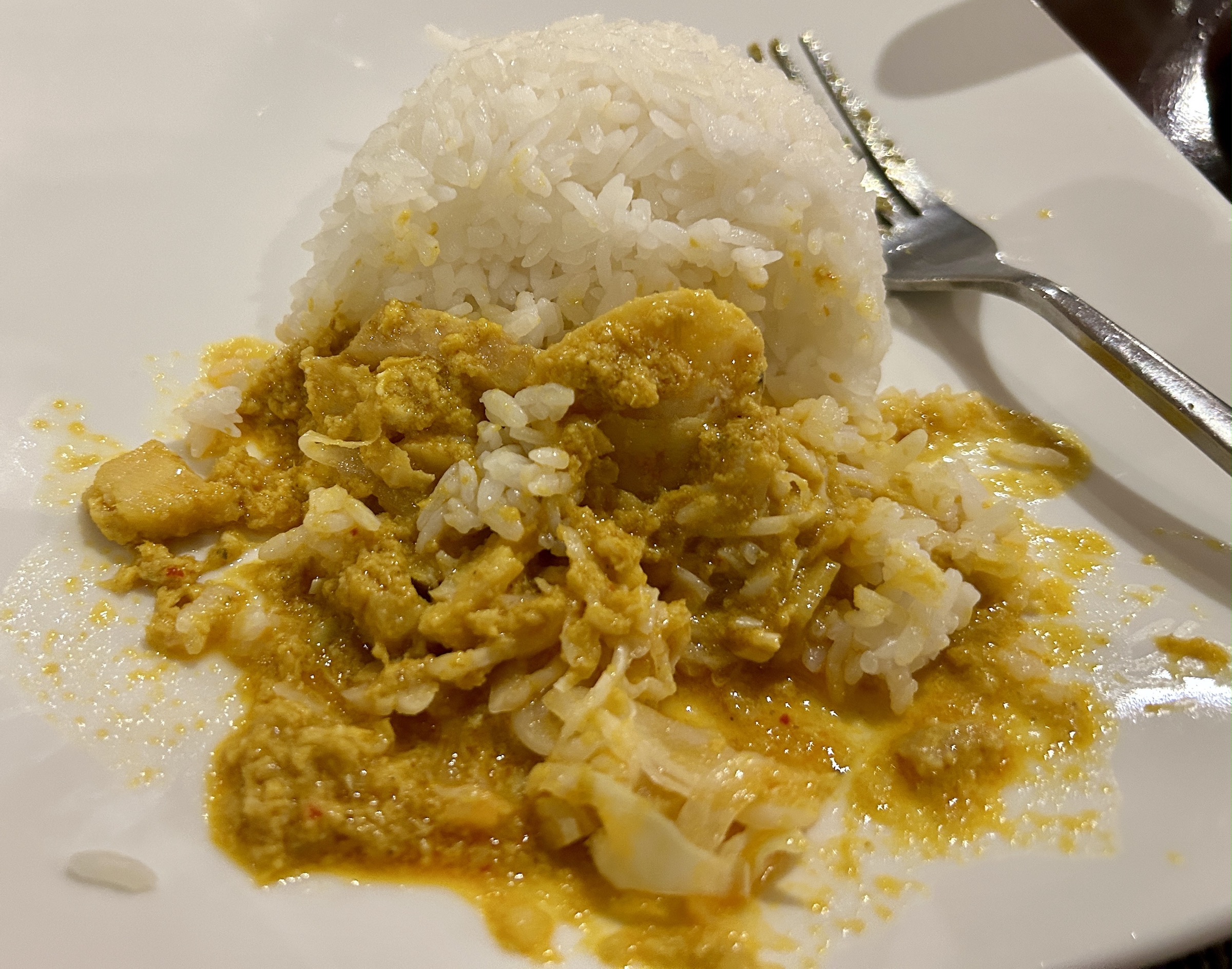
The third course was stir fried bamboo shoots with chicken and vegetables. It did taste as good as it looks.
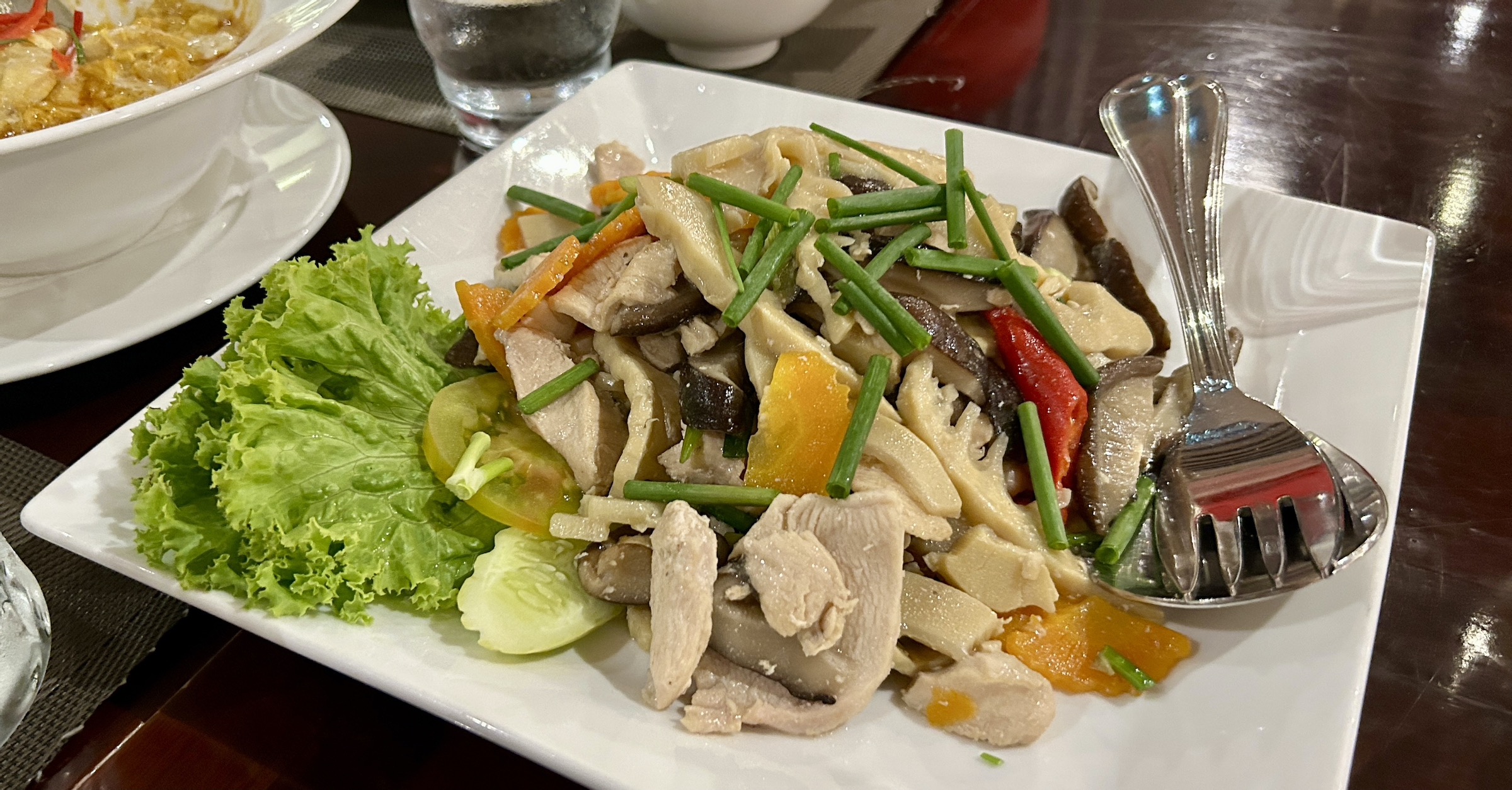
We ended our first day in Phnom Penh as we passed by the impressive Independence Monument on the way back to the hotel. It was built in 1958 and is the city’s equivalent of the Arc de Triumphe.
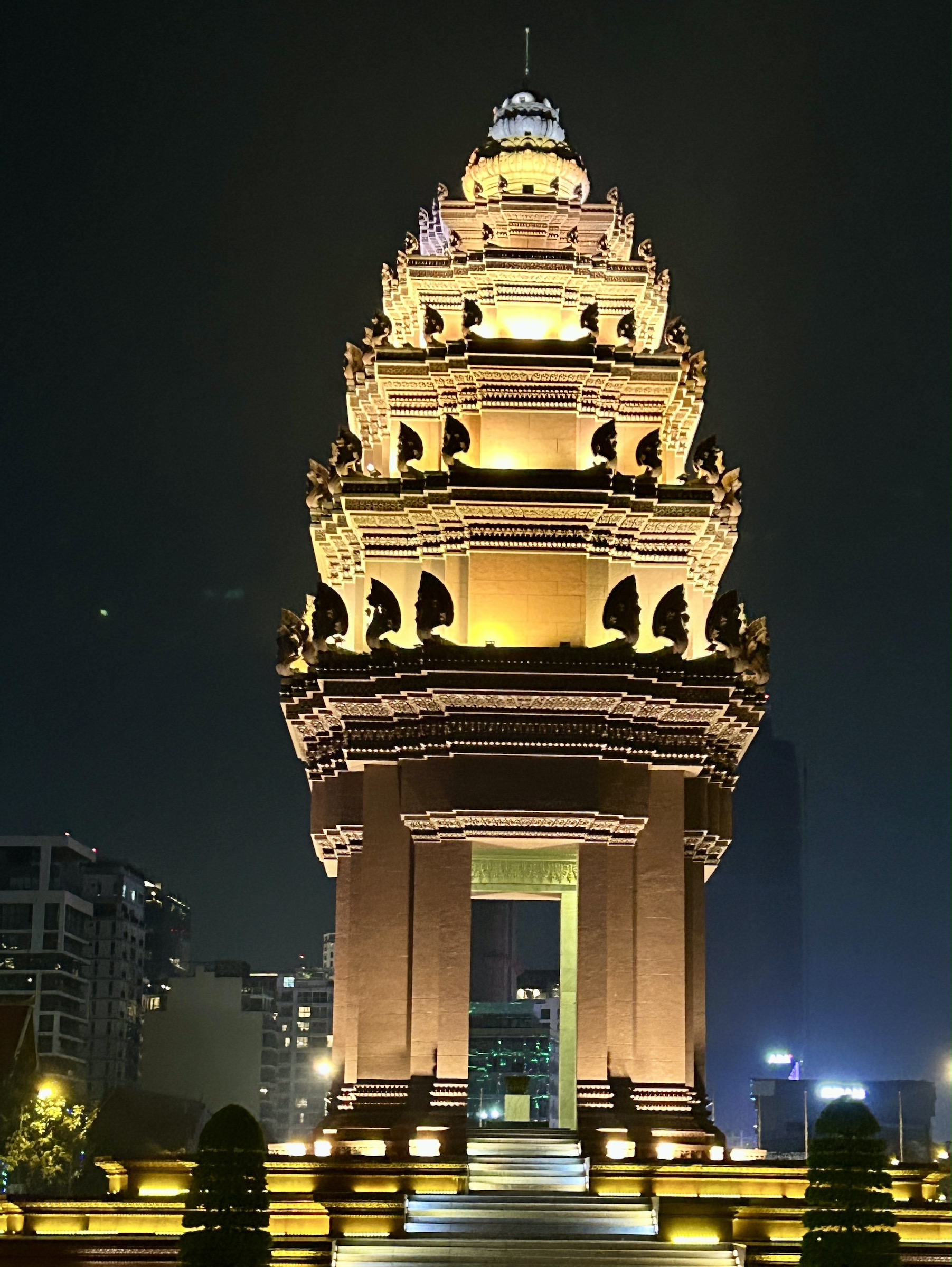
The next post from Cambodia will be a difficult one as we visit the SC 21 prison in Phnom Penh and then the Killing Fields just outside the city. It won’t be pleasant, but is vital to understanding the terrible recent history of this nation.


